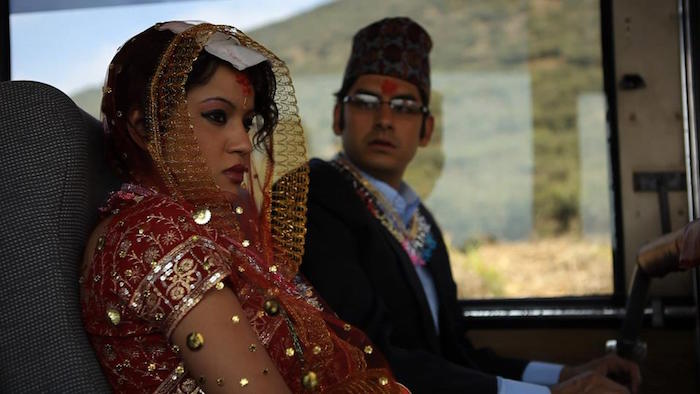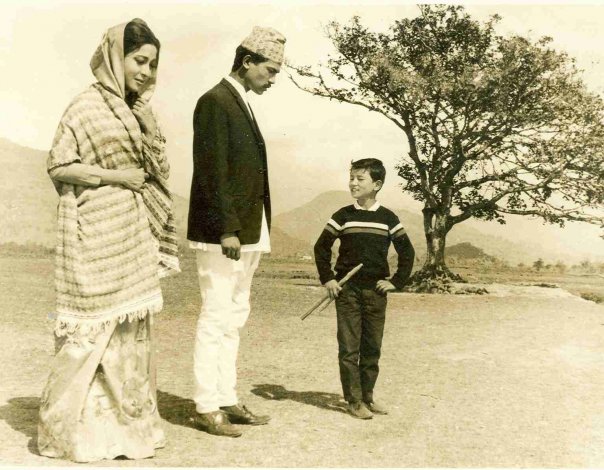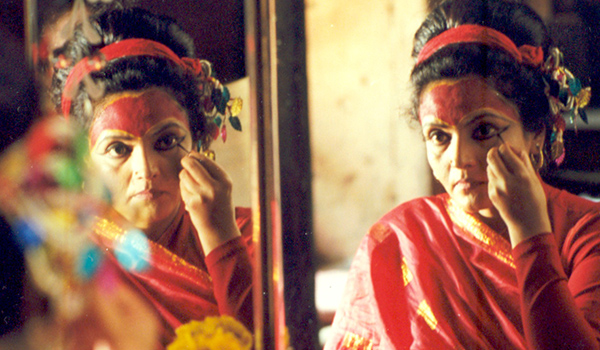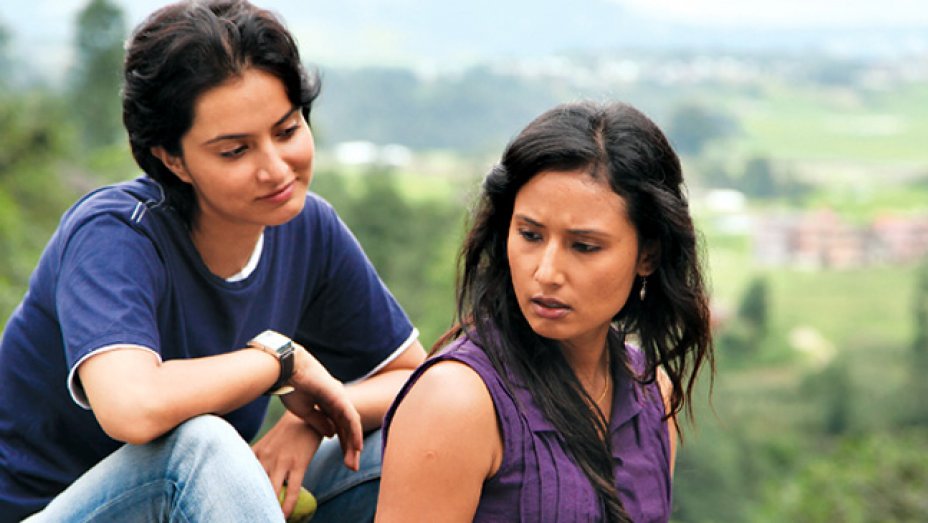NEPAL
 Monday, April 4, 2016 at 5:56AM
Monday, April 4, 2016 at 5:56AM (Note – With due respect to the Bikram Samwat calendar of the nation of Nepal, all dates in this article have been converted to the Gregorian calendar.)
Geographically remote and often burdened with financial hardship that has not always allowed for the costly craft of filmmaking, the Nepalese film industry did not premiere its first full-length feature film until 1952. D.B. Pariyar’s Satya Harischandra was shot in India and utilised Nepalese technicians and craftsmen living in India; an expanding release pattern in makeshift cinemas and town halls ensured it became a cultural sensation, although there is some debate as to whether it was shot in the Nepalese dialect or later dubbed.

(Pictured, above; Deepak Rauniyar's Highway, 2012)
The ruling government was aware of the impact upon the poorer classes that communal cinema going had and created a handful of propaganda films to indoctrinate them, but feature film production was nil. It was to be a decade later that Shiva Shanker and Bhuwan would star in Nepal’s first domestically produced and shot feature, Hira Singh Katri’s Aama (Mother, 1964). Its success was quickly followed by the film that would  shape the Nepalese film industry, it’s success unprecedented – B.S. Thapa’s Maitighar (Maternal Home,1966), starring Bollywood siren Mala Singha (pictured, right; with co-star C.P. Lohani and child extra). So popular was the film that the region in which it was set was renamed after the film’s title and remains so to this day. Maitighar was the crowning achievement of the Royal Nepal Film Corporation, formed in 1962 to foster local production, including Hijo Aaj Bholi (1968) and Parivartan (1972). But the film’s success overwhelmed the small sector – it would be 16 years before another ambitious film, Juni, would be attempted, and its commercial failure sent many investors scurrying.
shape the Nepalese film industry, it’s success unprecedented – B.S. Thapa’s Maitighar (Maternal Home,1966), starring Bollywood siren Mala Singha (pictured, right; with co-star C.P. Lohani and child extra). So popular was the film that the region in which it was set was renamed after the film’s title and remains so to this day. Maitighar was the crowning achievement of the Royal Nepal Film Corporation, formed in 1962 to foster local production, including Hijo Aaj Bholi (1968) and Parivartan (1972). But the film’s success overwhelmed the small sector – it would be 16 years before another ambitious film, Juni, would be attempted, and its commercial failure sent many investors scurrying.
The implementation of a production sector tax rebate and a fresh wave of creativity overtook the Nepalese film industry in the late 1970’s and 1980’s and production prospered. Kathmandu (or ‘Kallywood’, as it is known locally) became the centre for film production – Man Ko Bandh, Kimoori, Sindoor and a series of films called Jeevan Rekha employed many and were enjoyed by the masses.
The political upheaval of the early 1990’s engendered the young members of society with a vibrancy and freedom that had not been allowed to surface for many years. Production started to generate, the resurgence led by the blockbuster releases of director Tulshi Ghimire (Kusama Rumal, 1987, featured below; China, 1991; Darpan Chaya, which took over 20million Rupee’s, in 2001).
The war with Maoist rebels, which intensified between 1998 and 2000, shattered the film industry and stifled cinema attendance of Nepal, and the dire state of affairs remained that way under monarchist rule until 2006. Some filmmakers were able to construct films that resembled the social-realism works of 1950’s European cinema, and factual filmmaking, chronicling the plight of the people and the land gained international coverage. Key amongst this movement was Tsering Rhitar Sherpa, whose 2000 film Mukundo (pictured, below) was a deeply spiritual study in grief and traditional religion and earned rare international exposure. But as a commercial film culture, Nepal was moribund.
 It was the April 2006 overthrow of the monarchy that allowed for the rejuvenation of the film culture. The integration of the Maoist Communist Party of Nepal into mainstream politics resulted in investment in domestic production, the likes of which the Nepalese industry has not seen for some time. In 2007, Narayan Puri’s Aago (The Fire) and Himmat (The Guts) premiered, as did Badri Adhikari’s Aawaji (The Voice); a rebellious voice in the form of Dinesh Karki caused furore and debate with the racially volatile Aahankar; and factual film-making grew in stature with the release of Mami Kunaka Manchhle (We, the People of Remote Corner), that examined the slow developments of Nepal’s poorer communities, and Chaama Deu! Tara Nabirsa (Forgive! Forget Not!), based on the life of tortured journalist Bhairaja Ghimire.
It was the April 2006 overthrow of the monarchy that allowed for the rejuvenation of the film culture. The integration of the Maoist Communist Party of Nepal into mainstream politics resulted in investment in domestic production, the likes of which the Nepalese industry has not seen for some time. In 2007, Narayan Puri’s Aago (The Fire) and Himmat (The Guts) premiered, as did Badri Adhikari’s Aawaji (The Voice); a rebellious voice in the form of Dinesh Karki caused furore and debate with the racially volatile Aahankar; and factual film-making grew in stature with the release of Mami Kunaka Manchhle (We, the People of Remote Corner), that examined the slow developments of Nepal’s poorer communities, and Chaama Deu! Tara Nabirsa (Forgive! Forget Not!), based on the life of tortured journalist Bhairaja Ghimire. Production has remained relatively constant, with the sector veering away from the Bollywood clichés that have dominated commercial cinema and finding new voices willing to tell contemporary narratives. In recent times, Nepalese auteurs such as Nischal Basnet (Loot; Kabbadi; Talak Jung vs Tulke), Joes Pandey (Saanghuro), Deepak Rauniyar (Highway), Narayan Rayamajhi (Paradeshi), Subarna Thapa (Soongava-Dance of the Orchid; pictured, right) and Yaday Kumar Bhattarai (Jhola) have found favour both domestically and abroad. Advocates are demanding the government take a pro-active stance in protecting and fostering local production; with imported Bollywood (and, increasingly, Hollywood) fare still accounting for 80% of theatrical releases in Nepal, the local sector continually struggles to be seen by Nepalese audiences.
Production has remained relatively constant, with the sector veering away from the Bollywood clichés that have dominated commercial cinema and finding new voices willing to tell contemporary narratives. In recent times, Nepalese auteurs such as Nischal Basnet (Loot; Kabbadi; Talak Jung vs Tulke), Joes Pandey (Saanghuro), Deepak Rauniyar (Highway), Narayan Rayamajhi (Paradeshi), Subarna Thapa (Soongava-Dance of the Orchid; pictured, right) and Yaday Kumar Bhattarai (Jhola) have found favour both domestically and abroad. Advocates are demanding the government take a pro-active stance in protecting and fostering local production; with imported Bollywood (and, increasingly, Hollywood) fare still accounting for 80% of theatrical releases in Nepal, the local sector continually struggles to be seen by Nepalese audiences.
In 2015, Australian director Jennifer Peedom’s Sherpa, a documentary that captured both the seething tensions between guides and tourists on Mount Everest and the horrific tragedy of the April 2014 Khumbu Icefall disaster, earned a BAFTA nomination and was lauded internationally.
Key Events:
Kathmandu International Mountain Film Festival – Kathmandu, Nepal; January.
Organized by Himal Association, KIMFF started as a non-competitive, biennial festival founded in 2000. A wide selection of films reflecting contemporary society have been screened, including alpine documentation, archival footage, adventure cinema, experimental shorts, commentaries, anthropological narratives and narrative feature films. These movies have dealt with issues regarding cultural practices, lifestyles, conflict, wildlife, mountain-climbing, environment, globalization and gender.
www.kimff.org
Contact:
Film Development Board, Nepal.
GPO Box: 4400, SaraswatiNagar, Chabahil, Kathmandu, Nepal
Phone: (+ 977 1) 4812332, 4812387 Fax: (+977 1) 4812360
Email: fdbnepal@gmail.com
URL: http://www.film.gov.np/
(All effort is made to ensure editorial coverage is comprehensive and accurate.)
 Asian Cinema,
Asian Cinema,  Cinema,
Cinema,  History,
History,  Nepal
Nepal 